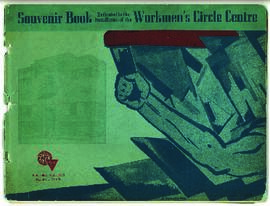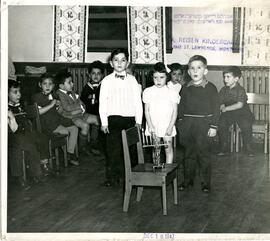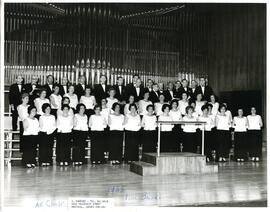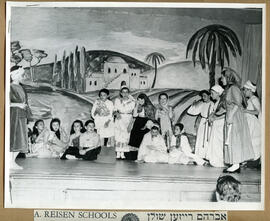Title and statement of responsibility area
Title proper
General material designation
- Multiple media
Parallel title
Other title information
Title statements of responsibility
Title notes
Level of description
Repository
Reference code
Edition area
Edition statement
Edition statement of responsibility
Class of material specific details area
Statement of scale (cartographic)
Statement of projection (cartographic)
Statement of coordinates (cartographic)
Statement of scale (architectural)
Issuing jurisdiction and denomination (philatelic)
Dates of creation area
Date(s)
-
1908 - ? (Creation)
- Creator
- Worker's Circle of Montreal
Physical description area
Physical description
4 m of textual records and other material
Publisher's series area
Title proper of publisher's series
Parallel titles of publisher's series
Other title information of publisher's series
Statement of responsibility relating to publisher's series
Numbering within publisher's series
Note on publisher's series
Archival description area
Name of creator
Administrative history
The Workmen's Circle (Arbeter Ring) of Montreal (now Worker's Circle) celebrated its 100th Anniversary in the city in 2007. The organization, which was originally founded in New York in 1892 by mainly Russian Jewish immigrants fleeing Czarist pogroms, conducted itself as an irretrievable part of the radical labour movement. An advocate for change, the Workmen's Circle also provided education, enlightenment, health benefits, open forums, a library, clubs and cemetery plots for its members. The work of the group extended to emergencies such as operating a soup kitchen during the Depression or organizing the Action Committee for Soviet Jewry in the late-1980s and early 1990s to aid immigration. Their involvement in politics saw support for the Cooperative Commonwealth Federation and candidates such as A.M. Klein, David Lewis and Kalman Kaplansky. In 1940, two Workmen's Circle members from Branch 151 were elected to the Montreal municipal council, Michael Rubenstein and Albert Eaton.
The first Workmen's Circle building was completed in 1936 after several years of planning and a hold due to the Depression. The building was located at 4848 St. Laurent and served the Workmen's Circle's business and social activities as well as one of the schools. Like most other Jewish organizations, the Workmen's Circle moved from the once-traditionally Jewish Main area and re-located to Isabella closer to the Jewish community campus.
Custodial history
Transferred directly from the Workmen's Circle, first date of transfer unknown, accural of new materials in November 2007.
Scope and content
Fonds consists of textual, graphic and artefact materials created by the Worker's Circle from the early 1900's to 2024. The fonds Contains the operating records of the Worker's Circle, its committees, Montreal branches, choir, the Abraham Reisen school program, and correspondence with the central Worker's Circle office in New York City.
Notes area
Physical condition
Immediate source of acquisition
Arrangement
Current arrangement based on an older system of description used by the JPL-A during the 1970s and 1980s. The finding aid was up-dated to RAD standards in March 2008.Arrangement and description redone according to RAD by Jessica Z and Eiran H in 2019.|Arrangement and description redone in 2021 by Maya P and Erica J to include the fonds' photographs and reduce confusion of duplicate file numbers per series.
Language of material
- English
- Russian
- Yiddish
Script of material
Location of originals
Availability of other formats
Restrictions on access
Terms governing use, reproduction, and publication
Finding aids
Associated materials
Accruals
Alternative identifier(s)
Standard number
Standard number
Access points
Subject access points
Name access points
- Workmen's Circle - Ladies' Vladeck Branch (Subject)
- Workmen's Loan Syndicate (Subject)
- Workmen's Circle - Vladeck Branch (Subject)
- Workmen's Circle of New York (Subject)
- Workmen's Circle - Moishe Lewis Branch (Subject)
- Workmen's Circle - Meyer London Branch no. 151 (Subject)
- Workmen's Circle - Eugene Debs Branch no. 204 (Subject)
- Workmen's Circle Schools (Subject)
- Workmen's Circle Choir (Subject)










